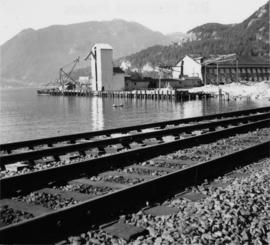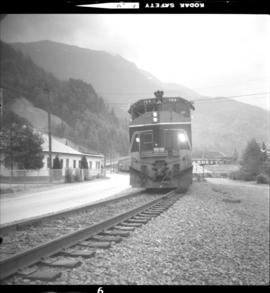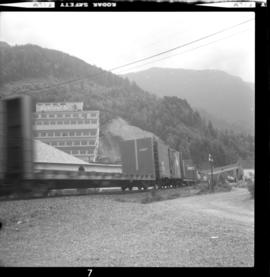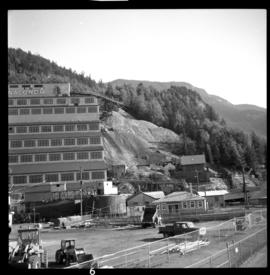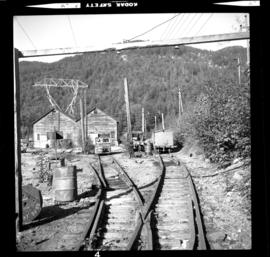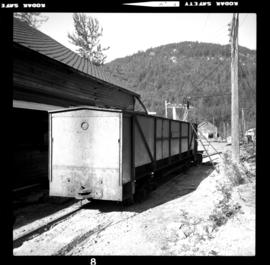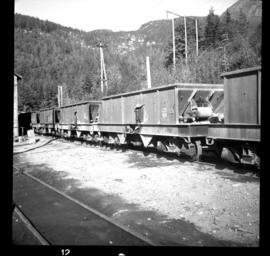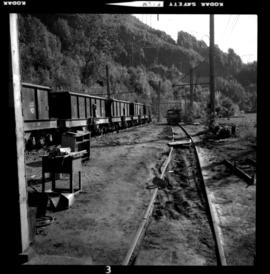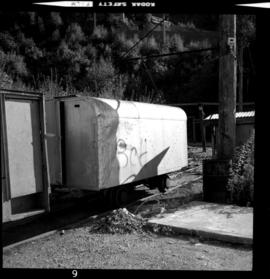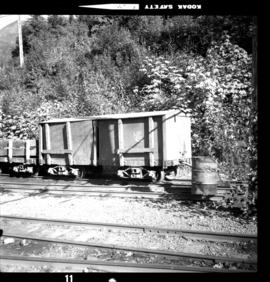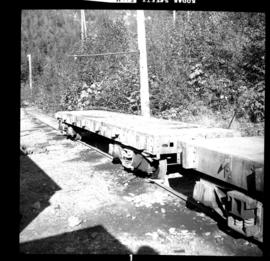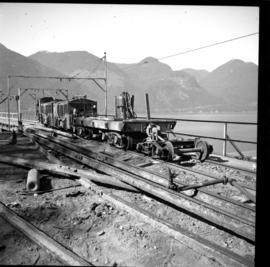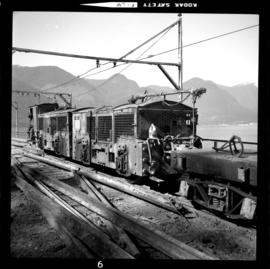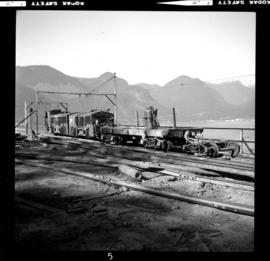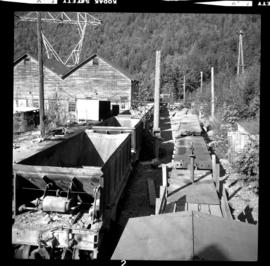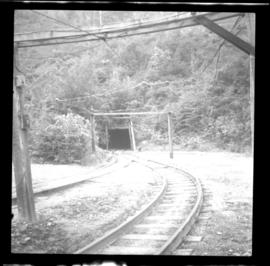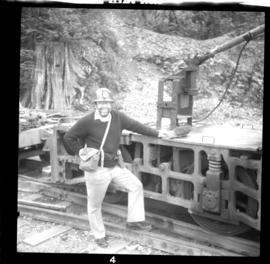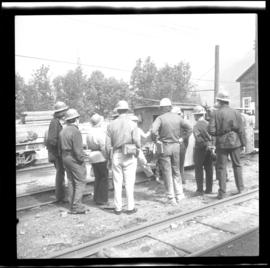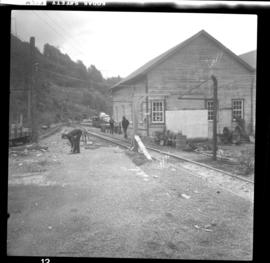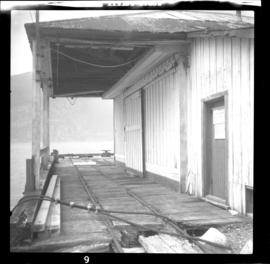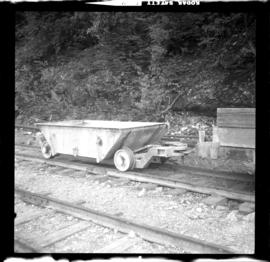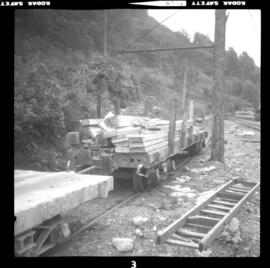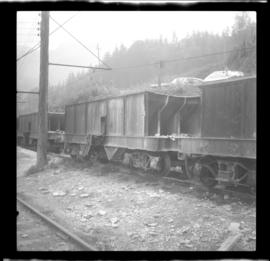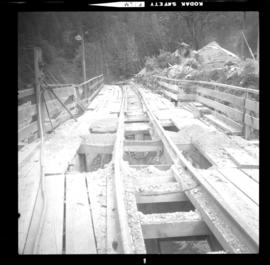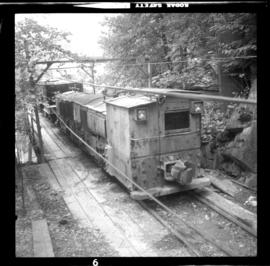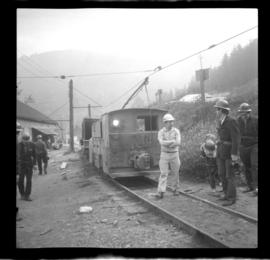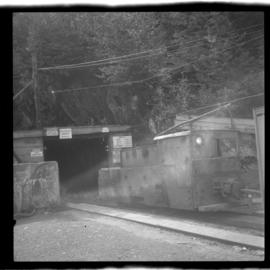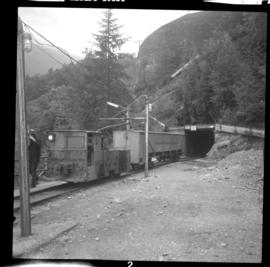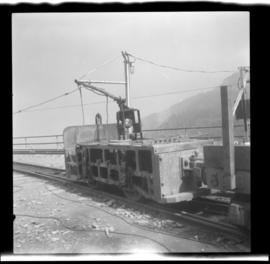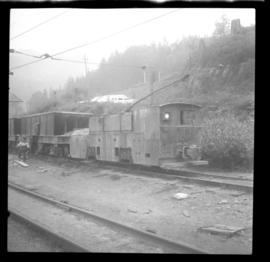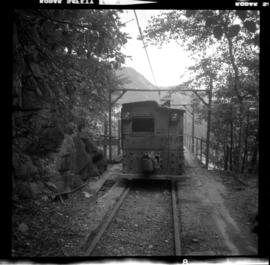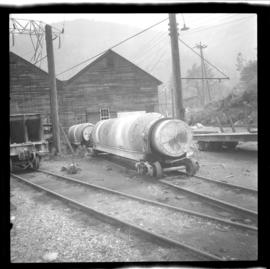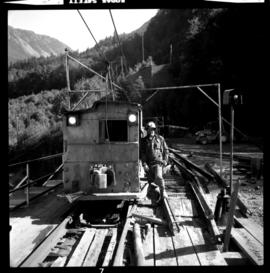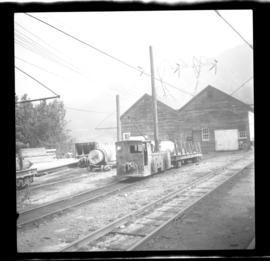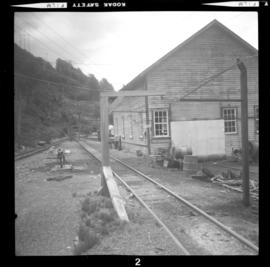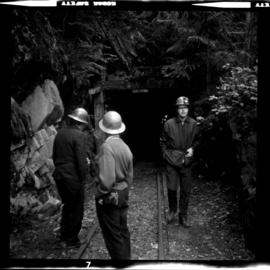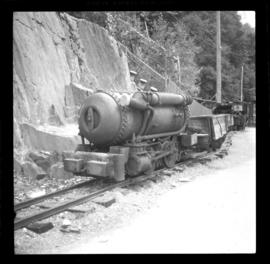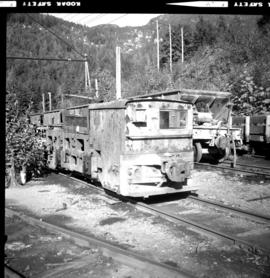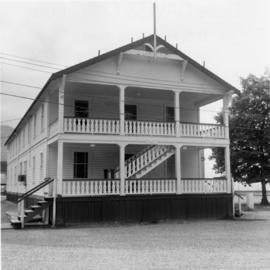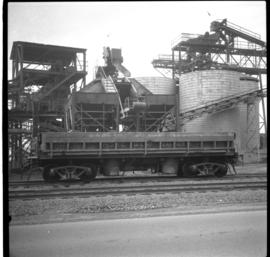Photograph taken in Britannia Beach looking at the Ana-Canada Britannia Mines Ltd. Image captured the view of the concentrated ore dock with BC Rail in the foreground. The mine was closed on November 1, 1974.
Britannia Beach, BC
48 Archival description results for Britannia Beach, BC
Photograph depicts the end view of northbound freight in Britannia Beach. Britannia Copper Mine is located to the right of the image.
Photograph depicts northbound freight in Britannia Beach.
Photograph depicts northbound freight in Britannia Beach. A concentrator (copper) of Ana-Canada Company is found in the background.
Photograph depicts a concentrator mill. The mine was closed for good on November 1, 1974. An auction of all residual equipment took place in August 1975.
Photograph depicts a concentrator mill. The mine was closed for good on November 1, 1974. An auction of all residual equipment took place in August 1975. B.C. Museum of Mining is located mid-right of the photo.
Photograph depicts the general view of the yards of the Anaconda Britannia Mine. Visible is the main portal and the top of ore bins. Images displays railway shops at the rear, with locomotive #4 and powder car found in the middle distance.
Photograph depicts a derelict mine electric railway. Some equipment was auctioned in August, 1975 after the mines closure on November 1, 1974. Visible is a man car (also called a trip car or a jitney).
Photograph depicts a mine electric railway. Visible are some of 10 remaining hopper cars that were awaiting removal to, possibly, Yukon after the auction in August, 1975.
Photograph depicts a derelict mine electric railway. Visible is auctioned equipment awaiting removal. Equipment included an 18 ton, locomotive #4, and ten hopper cars. Anaconda Britannia Mine had closed on November 1, 1974.
Photograph depicts a derelict mine electric railway in Britannia Beach. Visible is an ambulance car that was painted silver and was made of steel. It was likely to be cut up on site for scraps. Anacanada Britannia Mine closed on November 1, 1974.
Photograph depicts a mine electric railway. Visible is a powder car that was painted red and head a wooden box. It was used twice weekly on the explosives haul till the Anaconda Britannia Mine was closed on November 1, 1974.
Photograph depicts a derelict mine electric railway . Visible is one of four surviving large flat cars at the Anaconda Britannia Mine. It was sold at the auction that was held in August, 1975 after the mine was closed on November 1, 1974.
Photo depits a mule locomotive. A contractor from Calgray won the contract to remove the rails of the Anaconda Britannia Mine that was closed on November 1, 1974. The contractor bought the locomotive to do the job. It pulled out 2000-3000 ft. of twin sets of rails from the far end of a tunnel to open air at this point. Then, it unbolted them further into lengths and stocked them for shipment possibly to the Yukon.
Photograph depicts a mule trolley locomotive, formerly Anaconda Britannia Mines Ltd. #1. It was owned by a demolition contractor.
Photograph depicts a rail retrieval train that was used by a contractor. Rail at this location was scarce as it was acquired for use elsewhere.
Photograph depicts a view of some of the auctioned mine railway equipment in the yards of the Anaconda Britannia Mine. Visible on the left are repair shops and dump ore cars. On the left are flat cars including one with pole support used to depoit graphite grease on an overhead copper cable.
Photograph depicts the access point, which is via this portal, from the yard to the main haulage tunnel at the Britannia Copper Mine.
Photograph depicts a rare photograph of the owner of the railway collection in Britannia Beach.
Photograph depicts members of the Pacific Coast branch of the Canadian Railroad Historical Association.
Photograph depicts members of the Pacific Coast branch of the Canadian Railroad Historical Association.
Photograph depicts derelict trackage on Britannia Beach wharf. Trackage was last used in about 1955-57. Davies noted fitments that were used to carry overload line.
Photograph depicts derelict traction wheels found behind a railway workshop in Britannia Beach.
Photograph depicts what Davies catogorizes to be an "oddball" piece of equipment found in Britannia Beach.
Photograph depicts one of the 8 flat cars at the Britannia Copper Mine.
Photograph depicts one of the 23 ore hopper cars built by Vancouver Iron and Engineering Company Ltd., Vancouver in about 1942.
Photograph depicts part of the trackage north of a railway workshop that was not in use.
Photograph depicts locomotive #1 that was used as an ore bin switcher.
Photograph depicts trackage between the haulage portal and ore bins found in Britannia Beach.
Photograph depicts the main haulage line's portal in Britannia Beach.
Photograph depicts what was believed to be locomotive #3 that was built by Jeffrey and was found on the main yard line.
Photograph depicts locomotive #6 at the portal of the main haulage tunnel in Britannia Beach.
Photograph depicts locomotive #6, built by General Electric. It used to carry 12 people half a mile into the mountain of the Britannia Copper Mine.
Photograph depicts locomotive #8 built by Baldwin and was presumably the oldest amongtst the locomotives at the Britannia Copper Mine. It was only used for track maintenance.
Photograph depicts what was believed to be locomotive #3 that was built by Jeffrey and was found on the main yard line.
Photograph depicts locomotive #1 that was spotted 100 yards south of an ore bin in Britannia Beach.
Photograph depicts two moran cars that were used for hauling ready-mixed cement.
Photograph depicts a mule trolley locomotive #1 that purchased in August 1975 by a demolition contractor from Calgary. It was used to remove rails from the main haulage line.
Photograph depicts a railway workshop and car yard, west of the main portal of the main line in Britannia Beach. Locomotive #5 is visible.
Photograph depicts a railway workshop and car yard, west of the main portal of the main line in Britannia Beach. Locomotive #5 is visible.
Phoro depicts railways workshops in Britannia Beach.
Photograph depicts a dead end 100 yard tunnel beyond the ore bins in Britannia Beach. Davies notes that it was easier to tunnel than to make a track shelf.
Photograph depicts a compressed air mine locomotive on exhibition at the roadside in Britannia Beach.
Photograph depicts a derelict mine electric railway. Some equipment that was auctioned in August 1975 included locomotive #4, a trolley, and 10 bottom dump hopper cars that were used to carry crushed ore.
File consists of documentary photographs taken by David Davies of industrial railways, specifically the Britannia Copper Mine, in British Columbia.
Photograph depicts a mine building at the copper mine in Britannia Beach. The mine was still in use and well maintained.
Photograph depicts a Pacific Great Eastern ballast car which was built in 1955 by Eastern Car Company in Trenton, Nova Scotia.
Photograph depicts a view of the town site of Britannia Beach from a copper ore bin, above the concentrator.
